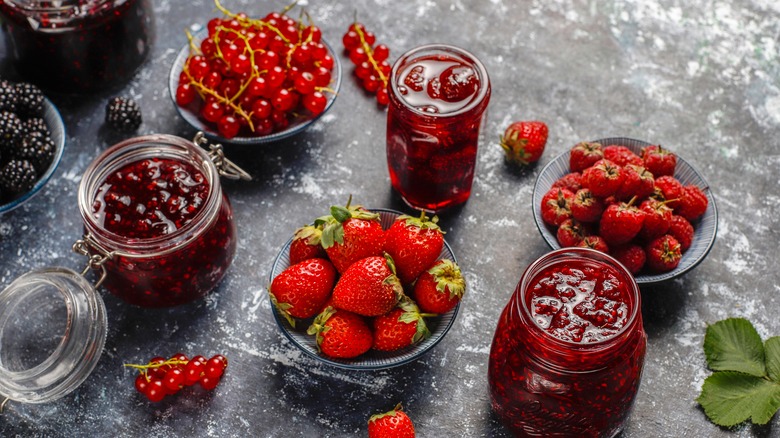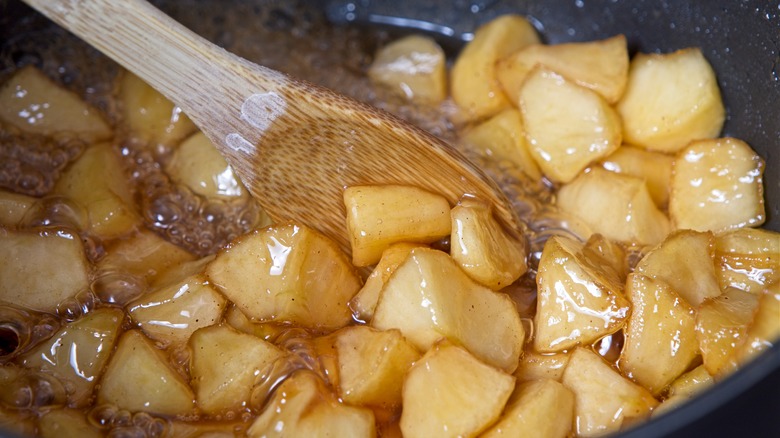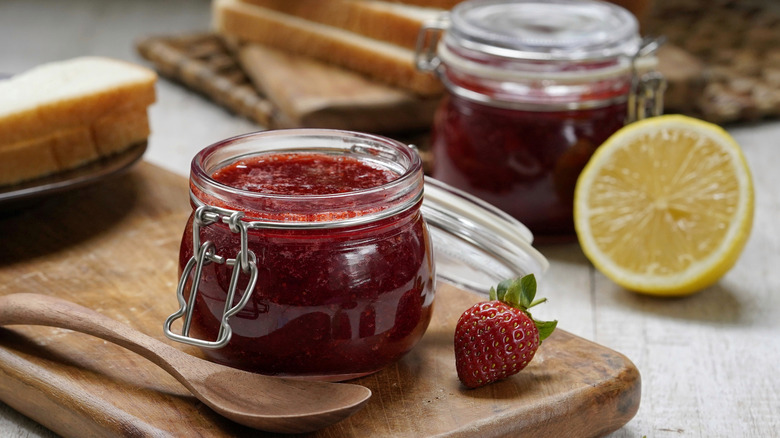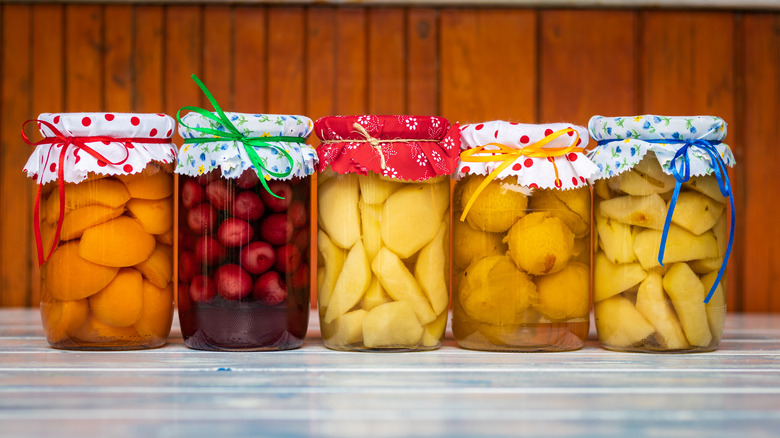Compote Vs. Jam: What's The Difference?
Food preservation techniques have existed for centuries. Humanity has dried, pickled, smoked, cured, sugared, and frozen their foods and crops to ensure that they avoid starvation after harvest and to allow them to have a larger stock of food options throughout the year (via Smart Sense). We don't simply crave figs or peaches when they are ripe, we crave them year-round, so we found ways to store them for later consumption.
Throughout history, some preservation techniques have worked better than others, but one of our favorites has been sugar preservation. Freshways claims that jamming is one of the earliest food preservation techniques and that even the Ancient Greeks used honey to preserve their fruits. Today, a variety of jams, jellies, and preserves line grocery shelves all a continuation of this age-old tradition. But while jams, jellies, and preserves are made similarly, they have some notably different characteristics. Another kind of sugary fruit mix, the compote, is often thrown into the fray. These fruit condiments are not the same and the two foodstuffs jam and compote should not be mistaken for the same thing.
What is compote?
For those of you who didn't grow up eating compote every other night for dessert, it is understandable that compote and jam may not be clearly differentiated for you, but trust us, they are not the same. Like jam, compote is made from fruit. You can use fresh or frozen fruit whether it be blueberries, strawberries, oranges, or apples. Compote is simply the addition of some sugar into the fruit and cooking it for a short amount of time on the stove at low heat until soft and syrupy (via Cookie + Kate). Depending on how much sugar you use or what kind of fruit you choose, you can completely customize your compote to your tastes.
Cully's Kitchen says that you can choose how smooth your compote's texture is by using whole or chopped fruit. Compote is often flavored with spices like nutmeg or cinnamon and a splash of liquor. Depending on your choice of fruit, chopping technique, and whether or not you use pectin will greatly vary the results of your compote.
This fruity mix is usually the star of the show when it comes to the dishes it is paired with. Food & Wine says that, unlike jam and jelly, compote is thicker and is sometimes eaten by itself for dessert or mixed in with parfaits like the Almond-Yogurt Parfait With Cinnamon-Apple Compote.
What is jam?
According to Britannica, jam was invented as a way to save fruit past the harvest season without the help of refrigeration (which mind you, did not exist until 1913).
Most of us are pretty familiar with jam. We've had it spread on everything from toast to croissant pastries and, as children, may have even begged to lick the spoon after a particularly long day of stirring jam over a hot stove.
Like compote, jam is made from a variety of fruits and is cooked on the stovetop, but otherwise, the texture and taste (besides fruitiness) are different. Jam is made by crushing fruit and leaving in the fibrous aspects like the skin and seeds, then the mixture is added with an abundance of granulated sugar for preservation and stirred on the stove until thick and well ... jammy. The New York Times says that adding some kind of acid, whether from lemons or vinegar, is important to the success of your jam's flavor and that the pectin, which is added to thicken jam, needs acid to activate.
Jam is often used as a way to add fruity flavor to your dish. It can be used to flavor a cocktail, sweeten up savory sandwiches like grilled cheese, or top desserts like ice cream, pancakes, or pudding (via Epicurious).
The major differences?
Both these delicious and fruity mixers are sweet tasting, but when it comes down to nutrient content, these foods lie in stark contrast. According to Botanical-online, compote has a much shorter cooking time than jam. When fruit is cooked, key nutrients from the fruit are lost. The longer the fruit is cooked, the fewer nutrients it provides. Additionally, jam on average contains 50% or more sugar whereas compote is 15% or less. This makes compote the healthier of the two to indulge in, but it must be taken into account that people generally eat significantly less jam than they do compote in their dishes.
MasterClass claims that there are two other major differences between compote and jam: spreadability and storage. Jam is easier to spread and has a consistent texture whereas compote is thicker because it hasn't been reduced to a full syrupy mixture and maintains many whole chunks of fruit. As for storage, compote has less sugar and therefore has a shorter shelf life, and is intended to be eaten immediately after making.



